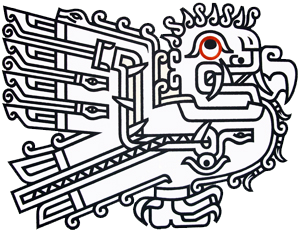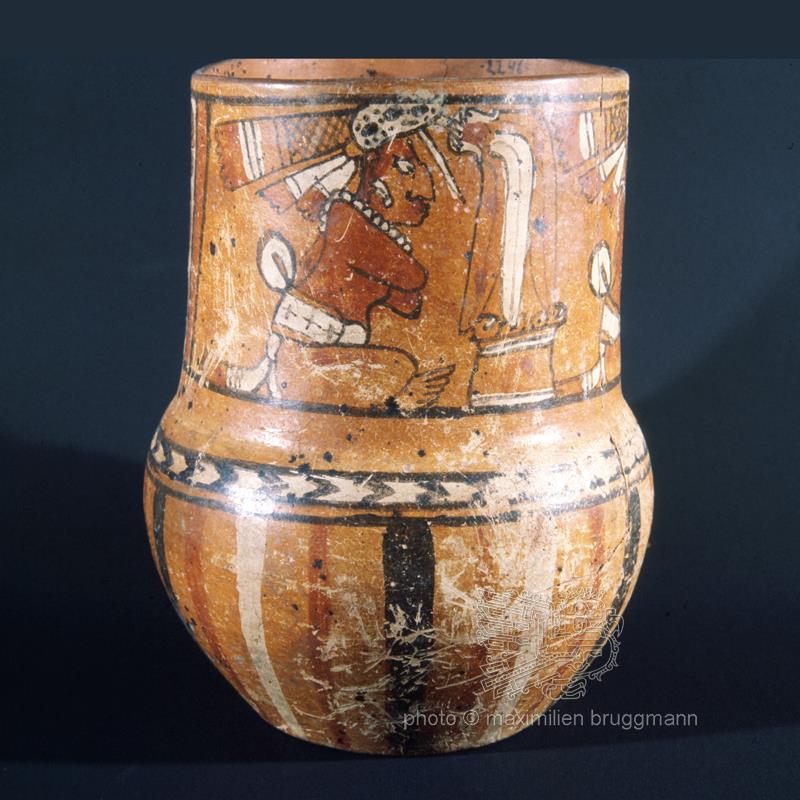Description
Polychrome terracotta vase from the Late Classic Maya period (Chama style) probably representing a priest wearing an impressive headdress made of rainforest bird feathers. This example is 21 cm high; the diameter of the opening is 13 cm (Museo Nacional de Arqueología y Etnología de Guatemala). Maya ceramics, of which a great number of samples have been collected, went through four stages of evolution, from the simplest and most utilitarian forms to more and more complicated, even baroque, ritual vessels and anthropomorphic pieces representing clergy or nobility. Other clay pieces are in the form of mythological animals. The study of these ceramics and their ornamentation has enabled specialists to supplement the information obtained from excavations carried out in the different regions occupied by the Maya throughout the pre-Columbian period. - 1977





